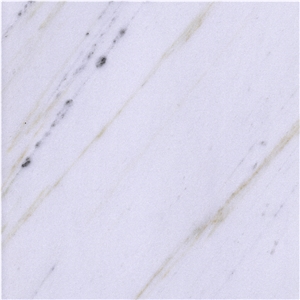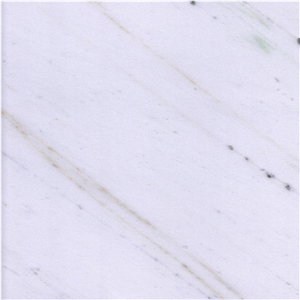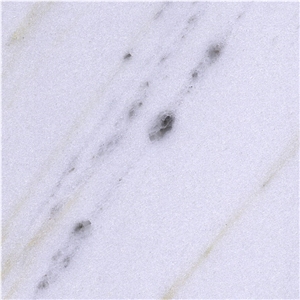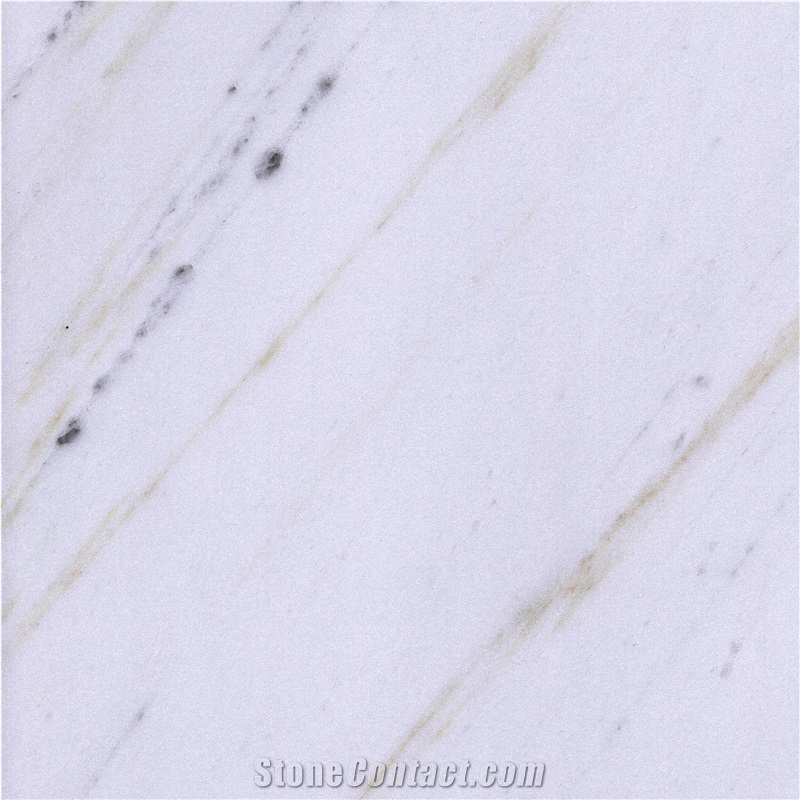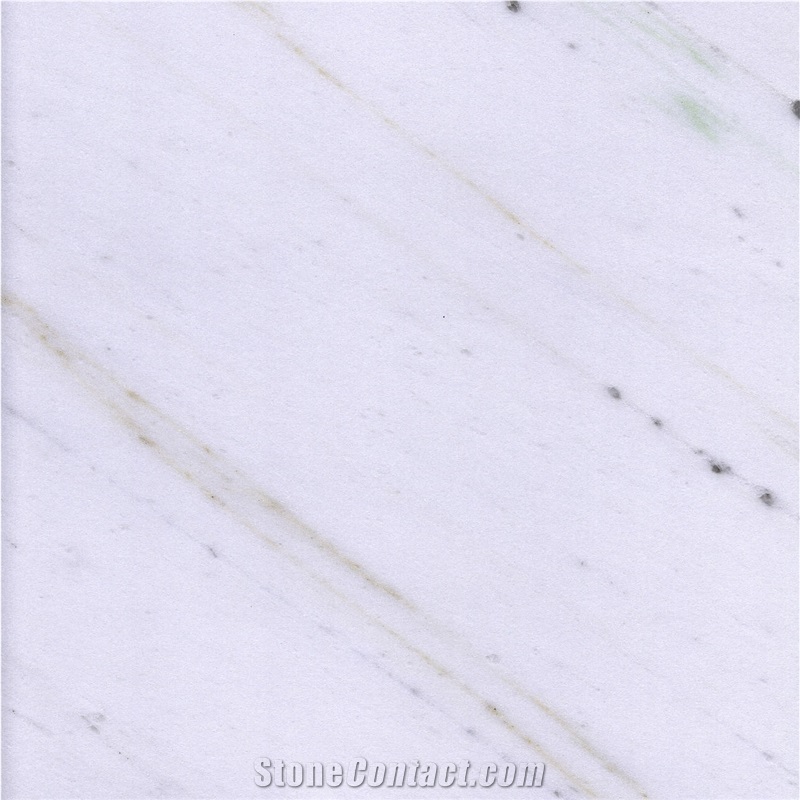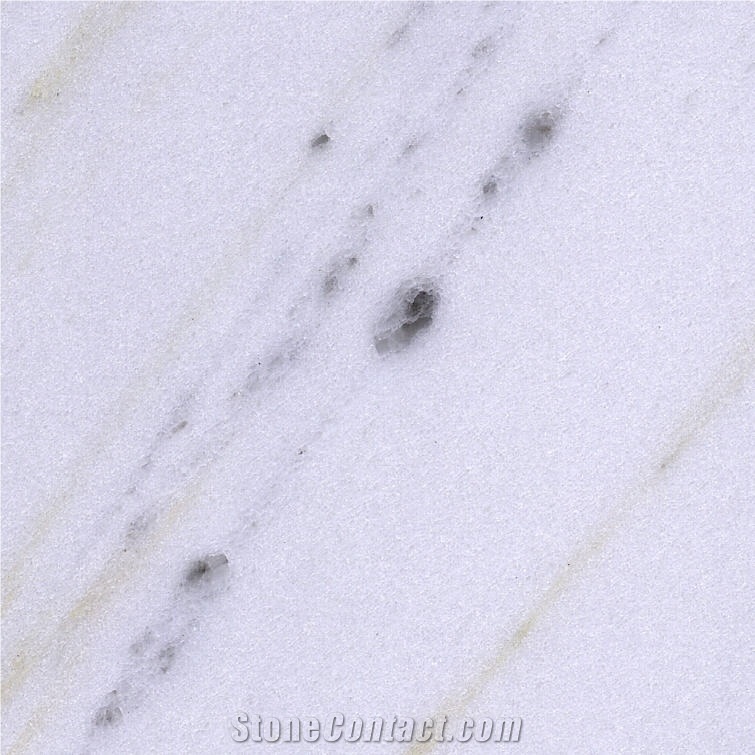Lincoln White Marble
 United States
(Lincoln County, Colorado)
United States
(Lincoln County, Colorado)
Lincoln White Marble is a kind of white marble quarried in United States. This stone is especially good for Exterior - Interior wall and floor applications, monuments, countertops, mosaic, fountains, pool and wall capping, stairs, window sills and other design projects. It also called Lincoln White,Colorado Lincoln Marble,Valley Gold Vein Marble,Colorado White Marble,Colorado Yule Marble,in China stone market:林肯白(Línkěn bái) . Lincoln White Marble can be processed into Polished, Sawn Cut, Sanded, Rockfaced, Sandblasted, Tumbled and so on.

Can I put hot pans on Lincoln White Marble countertop?

What is the maximum gap between Lincoln White Marble balustrade?

Is United States's Lincoln White Marble an expensive stone?

Can United States's Lincoln White Marble be used exterior applications in cold climates?

How is Lincoln White Marble formed?

What is Lincoln White Marble used for?

Is Lincoln White Marble a good countertop?

Can United States's Lincoln White Marble be used in landscaping?

What grade is United States's Lincoln White Marble?

What is the difference between a Lincoln White Marble baluster and a Lincoln White Marble balustrade?

What is the standard for a Lincoln White Marble balustrade?

Can a knife scratch a Lincoln White Marble countertop?

Can United States's Lincoln White Marble be used in a dining room?

What is the best height for a Lincoln White Marble balustrade?

Are there color variations of United States's Lincoln White Marble?

Why is there so much marble in Colorado?

How thick is United States's Lincoln White Marble slabs?

How can I clean Lincoln White Marble countertop?

Is Lincoln White Marble good for stairs?

What is the average density of United States's Lincoln White Marble?

What are the characteristics of Lincoln White Marble?

Is Lincoln White Marble calcitic or dolomitic marble?

Is Lincoln White Marble easy to sculpt?

Can coffee stain Lincoln White Marble top?

What is the coefficient of friction of Combed United States's Lincoln White Marble tiles?

Do Lincoln White Marble countertops stain easily?

Are Lincoln White Marble countertops hard to take care of?

Can United States's Lincoln White Marble be used outdoors?

How do I choose a Lincoln White Marble balustrade for terrace?

Do they still mine Lincoln White Marble in Marble Colorado?

What does Lincoln White Marble look like?

How can I clean Lincoln White Marble floor tiles?
-

 China
China
 1YRDiamond members are premium members on platform, providing members with comprehensive approach to promoting their products, increasing products exposure and investment return to maximize.
1YRDiamond members are premium members on platform, providing members with comprehensive approach to promoting their products, increasing products exposure and investment return to maximize.
 Verified Supplier is for prove company authenticity,including business license,trade license and effective office space,to enhance buyers' trust to suppliers and their products, reducing communication costs.
Verified Supplier is for prove company authenticity,including business license,trade license and effective office space,to enhance buyers' trust to suppliers and their products, reducing communication costs.
Contact Supplier
-

FuJian WanLong Diamond Tools CO,.LTD
 China
China
 Verified Supplier is for prove company authenticity,including business license,trade license and effective office space,to enhance buyers' trust to suppliers and their products, reducing communication costs.
Verified Supplier is for prove company authenticity,including business license,trade license and effective office space,to enhance buyers' trust to suppliers and their products, reducing communication costs.
Contact Supplier
-

Quanzhou First Impression Imp.&Exp. Trading Co.,Ltd.
 China
China
 Verified Supplier is for prove company authenticity,including business license,trade license and effective office space,to enhance buyers' trust to suppliers and their products, reducing communication costs.
Verified Supplier is for prove company authenticity,including business license,trade license and effective office space,to enhance buyers' trust to suppliers and their products, reducing communication costs.
Contact Supplier
-

Quanzhou First Impression Imp.&Exp. Trading Co.,Ltd.
 China
China
 Verified Supplier is for prove company authenticity,including business license,trade license and effective office space,to enhance buyers' trust to suppliers and their products, reducing communication costs.
Verified Supplier is for prove company authenticity,including business license,trade license and effective office space,to enhance buyers' trust to suppliers and their products, reducing communication costs.
Contact Supplier
-

 Italy
Italy
 13YRDiamond members are premium members on platform, providing members with comprehensive approach to promoting their products, increasing products exposure and investment return to maximize.
13YRDiamond members are premium members on platform, providing members with comprehensive approach to promoting their products, increasing products exposure and investment return to maximize.
 Verified Supplier is for prove company authenticity,including business license,trade license and effective office space,to enhance buyers' trust to suppliers and their products, reducing communication costs.
Verified Supplier is for prove company authenticity,including business license,trade license and effective office space,to enhance buyers' trust to suppliers and their products, reducing communication costs.
Contact Supplier
-

Quanzhou First Impression Imp.&Exp. Trading Co.,Ltd.
 China
China
 Verified Supplier is for prove company authenticity,including business license,trade license and effective office space,to enhance buyers' trust to suppliers and their products, reducing communication costs.
Verified Supplier is for prove company authenticity,including business license,trade license and effective office space,to enhance buyers' trust to suppliers and their products, reducing communication costs.
Contact Supplier
-

Quanzhou First Impression Imp.&Exp. Trading Co.,Ltd.
 China
China
 Verified Supplier is for prove company authenticity,including business license,trade license and effective office space,to enhance buyers' trust to suppliers and their products, reducing communication costs.
Verified Supplier is for prove company authenticity,including business license,trade license and effective office space,to enhance buyers' trust to suppliers and their products, reducing communication costs.
Contact Supplier
-

Quanzhou First Impression Imp.&Exp. Trading Co.,Ltd.
 China
China
 Verified Supplier is for prove company authenticity,including business license,trade license and effective office space,to enhance buyers' trust to suppliers and their products, reducing communication costs.
Verified Supplier is for prove company authenticity,including business license,trade license and effective office space,to enhance buyers' trust to suppliers and their products, reducing communication costs.
Contact Supplier
-

Quanzhou First Impression Imp.&Exp. Trading Co.,Ltd.
 China
China
 Verified Supplier is for prove company authenticity,including business license,trade license and effective office space,to enhance buyers' trust to suppliers and their products, reducing communication costs.
Verified Supplier is for prove company authenticity,including business license,trade license and effective office space,to enhance buyers' trust to suppliers and their products, reducing communication costs.
Contact Supplier
-

Xiamen Landiview Stone Co. Ltd.
 China
China
 8YRDiamond members are premium members on platform, providing members with comprehensive approach to promoting their products, increasing products exposure and investment return to maximize.
8YRDiamond members are premium members on platform, providing members with comprehensive approach to promoting their products, increasing products exposure and investment return to maximize.
 Verified Supplier is for prove company authenticity,including business license,trade license and effective office space,to enhance buyers' trust to suppliers and their products, reducing communication costs.
Verified Supplier is for prove company authenticity,including business license,trade license and effective office space,to enhance buyers' trust to suppliers and their products, reducing communication costs.
Contact Supplier
The request includes: 1. surface finished, size 2. quantity required






